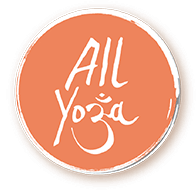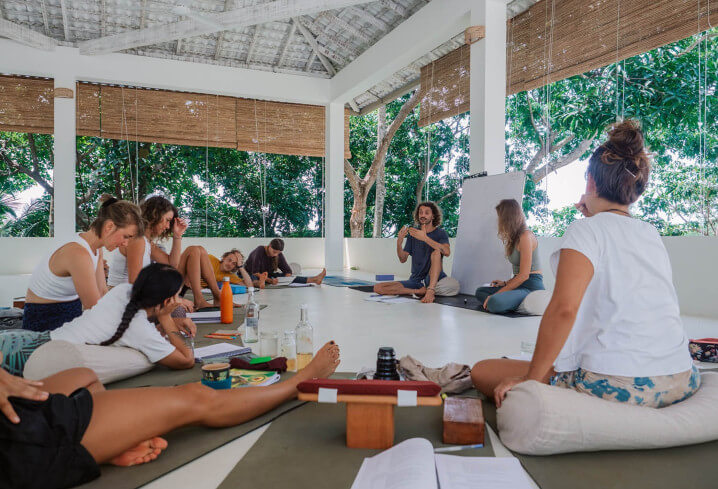7 Reasons to Make Yoga a Part of the School Curriculum
Many studies claim that Yoga classes in schools can help students feel better, physically and mentally, and improve their academic performance.
So, at Edmunds Elementary in Des Moines, Iowa, Yoga is part of the daily schedule.
Students practice Yoga
Each class begins the morning with a discussion on topics such as gratitude, responsible citizenship, peacemaking, and healthy sleep. This is followed by a Yoga practice that includes breath work, postures, and meditation. All of this helps students bring their attention to the present moment and prepare properly for learning.
After lunch, lights are dimmed, soft music is played, and students return from recess to meditate for 10 minutes in silence and then indulge in meditation. Teachers also do Yoga at other times of the day, if necessary.
The school has seen progress in academic achievement: test scores have increased by more than 18%, and the number of students called to the principal has decreased by more than 2/3 in 2 years. The principal was struck by their strength, sense of community, unity, and involvement in school life.
But does scientific research support this experience? And what results can we expect from Yoga programs in schools?
Yoga in schools is a fairly new subject of study for science, but already the early evidence from a growing body of research is promising. This article points out compelling reasons why incorporating Yoga into school curricula can help students, teachers, and schools address many of the problems that characterize today’s education.
7 reasons why Yoga in school should be
#1. Emotional regulation
In order for students to succeed in school and in life, it is crucial for them to develop self-regulation skills: the ability to control and adapt their behavior, mindfulness, and displays of emotion according to internal cues, the environment, and the response from others. Research shows that Yoga in School can help students develop self-regulation skills.
#2. Academic performance
Most schools use academic performance as the primary measure of student success. Unfortunately, many students struggle to achieve or maintain good grades, which can lead to expulsion. Research shows that Yoga can improve concentration and memory as well as reduce stress, 3 factors that greatly increase a child’s chances of academic success.
Specialized services also help with college assignments. So, for example, you can pay for essay cheap , and competent authors will write any kind of paper. So you can count on a high grade.
#3. Reducing Anxiety and Stress
Children and teens are exposed to a variety of stressors at school and at home. These stressors can range from chronic stressors (e.g., living in poverty, abuse) to minor stressors (exam anxiety). Adolescents with uncontrolled stress are at higher risk of developing mental health disorders such as anxiety disorders. So researchers are exploring whether Yoga in School can help reduce anxiety, psychogenic tension, and stress.
#4. Stress Resistance
Yoga can help students cope with negative life events, such as problems in the family or getting low grades in class. The practice of Yoga can increase students’ sense of personal control and self-efficacy in dealing with stress and emotions, thereby increasing psycho-emotional resilience. The problem of bad grades can be solved if you buy an essay paper for sale . Competent writers will prepare a paper in any discipline and in a short time.
#5. Fewer Problematic Behaviors
Unfortunately, prolonged school bullying is common. Bullying can have a variety of negative effects on students, including academic difficulties. In addition, problem behavior such as bullying often results in suspensions and disciplinary action, which means that these students also end up missing out on important learning materials.
In yoga classes, students can become more aware of their emotions and behaviors. This can help students better control impulsive behaviors and negative reactions in order to meet situational demands and achieve personal goals.
#6. Physical well-being
Yoga is particularly well suited to provide young people with non-competitive, gentle ways to engage in physical activity.
Yoga may seem like a good stretching technique at first glance, but the variety and consistency of poses combined with the practice of deep breathing create an extremely varied and effective method of improving a number of health-related skills.
#7. Teacher well-being and the psychological climate of the classroom
Proponents of school meditation programs suggest that the benefits of these programs may influence classroom climate and teacher effectiveness. Preliminary research on yoga programs for teachers suggests that Yoga is also beneficial for teachers’ well-being.
21 Benefits of Yoga Classes at School
Below we have compiled a list of scientifically proven benefits of Yoga and meditation practice in school that a child receives by maximizing the development of academic, social, and emotional competence in addition to the benefits to teachers and the creation of a supportive classroom environment:
-Yoga provides students with healthy ways to express, balance, and regulate their emotions and behaviors.
-Yoga promotes a more relaxed and comfortable state, the ideal state for productive learning.
-Yoga has a positive effect on student performance. If you find yourself struggling to do your studies, homework help services like this website can help you out.
-Yoga brings the present moment into the present – a basic condition for proper learning.
-Yoga encourages communication and mutual connection in the classroom.
-Yoga provides opportunities for healthy breaks during the day.
-Yoga reduces anxiety and tension (e.g., fear before exams or when taking tests).
-Yoga reduces anger, depression, and fatigue.
-Yoga cultivates balanced psychological and physiological responses to stress, such as managing stress, reducing problem reactions to stress, and reducing cortisol production.
-Yoga increases concentration and improves memory.
-Yoga helps develop patience and understanding, thereby reducing problem behaviors, which include lethargy, bullying, skipping without good reason, impulsivity, hostility, and reactivity.
-Yoga supports social-emotional learning.
-Yoga develops flexibility, strength, and physical qualities.
-Yoga improves mind/body awareness and self-awareness.
-Yoga improves executive functions (the processes necessary to select, organize, and appropriately initiate purposeful actions) by combining the cognitive and neurological benefits of physical activity with breathing exercises and concentration techniques.
-Yoga builds resilience and develops greater self-control by helping students adapt and cope with negative life events.
-Yoga increases self-confidence and self-esteem.
-Yoga helps show respect for self and others.
-Yoga improves physiological outcomes such as respiratory muscle strength, heart rate variability (HRV), visual perception and motor accuracy, and stress response.
-Yoga promotes a calm, harmonious classroom climate and a positive school climate.
-Yoga has beneficial effects on teacher personality development along with improvements in calmness, mindfulness, well-being, sleep quality, emotional and physical well-being, mood, and reductions in indicators such as blood pressure and cortisol levels. Yoga helps reduce anxiety and stress. Taken together, these benefits for teachers support a positive classroom climate, teaching effectiveness, and positive student outcomes.
More and more teachers are recognizing that Yoga, breathing, and meditation practices are beneficial to the mental health and well-being of their students, themselves, and the learning environment as a whole. In addition, Yoga and meditation promote self-awareness and self-management skills, which are the foundation of social and emotional learning competencies.
Read More Blogs
Want to Become a Yoga Teacher and/or
Deepen your Yoga Practice?
2 FREE EBOOKS FOR YOU:
- 20 things to know before choosing a yoga teacher training
- 7 tips to deepen your yoga practice right now

Copyright © 2024, All Yoga International ltd. All Rights Reserved
Privacy Policy
